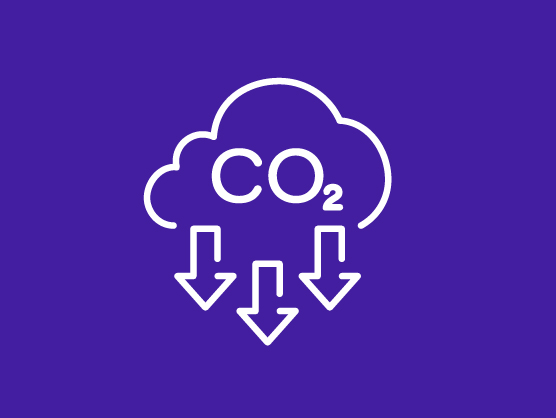School climate action guide
In 2019 Cheshire West and Chester Council declared a Climate Emergency and developed a Climate Emergency Response Plan to help the borough to become net zero by 2045.
This ambitious target will help to provide greener communities for our residents today and for future generations.
Everyone can play their part to help us achieve this goal including our local schools and young people.
This guide and accompanying template have been created to help your school do that. It will also help to fulfil the requirement set by the Department for Education‘s (DfE) sustainability and climate change strategy for educationContinue reading
In 2019 Cheshire West and Chester Council declared a Climate Emergency and developed a Climate Emergency Response Plan to help the borough to become net zero by 2045.
This ambitious target will help to provide greener communities for our residents today and for future generations.
Everyone can play their part to help us achieve this goal including our local schools and young people.
This guide and accompanying template have been created to help your school do that. It will also help to fulfil the requirement set by the Department for Education‘s (DfE) sustainability and climate change strategy for education. The DfE strategy states that “By 2025, all education settings will have nominated a sustainability lead and put in place a climate action plan”.
The guide is divided into the following sections:
- Why you need a school climate action plan
- Making your climate action plan
- How to complete your climate action plan template
- Establishing your school's carbon baseline
- Decarbonisation
- Biodiversity
- Climate education and green careers
- Resilience and adaptation
- Active and sustainable travel
- Air quality
- Waste, consumption and recycling
- Food
- Putting your climate plan into action
- Further resources
-
Why you need a school climate action plan
Share Why you need a school climate action plan on Facebook Share Why you need a school climate action plan on Twitter Share Why you need a school climate action plan on Linkedin Email Why you need a school climate action plan link
This guide has been created to help schools create a climate action plan. This will help to fulfil the requirement set by the Department for Education‘s (DfE) sustainability and climate change strategy for education.
The DfE strategy states that “By 2025, all education settings will have nominated a sustainability lead and put in place a climate action plan”.
It also sets a target to reduce greenhouse gas emissions by 75% by 2037 across all education settings.
By creating a climate action plan, your school is taking the important first step to reach this target. It will also offer your school a number of other benefits.
Reduced energy bills. Using energy more efficiently can lower your schools' costs.
Being more prepared. Your school will be better adapted to deal with the negative effects of climate change, such as overheating.
An opportunity for students and staff to understand more about green careers and skills.
Improving your school’s reputation. You can become a leading example by showing your school is taking climate action.
Improved staff and student wellbeing.
As part of the DfE requirements, all school climate action plans must include at least one action from these four key areas:
Decarbonisation
Adaptation and resilience
Biodiversity
- Climate education and green careers
There are also plenty of other things your school can do and other areas where you can make a change. Many of these areas also overlap.This guide and template will help schools to create a meaningful action plan that fulfils the DfE requirements for education settings. It does this by combining helpful guidance in one place and offering practical tips on how to carry out the plan.
-
Making your climate action plan
Share Making your climate action plan on Facebook Share Making your climate action plan on Twitter Share Making your climate action plan on Linkedin Email Making your climate action plan link
For a successful climate action plan you will need to assemble and engage a diverse team. Appointing a sustainability lead who can help to coordinate is an important first step. It is also one of the DfE’s requirements. Sustainability leadership could be one person or a group of people. The lead person or group should have responsibility for the development and implementation of your climate action plan.
Climate change goals rely on contributions from:
education staff
operational staff who understand the technical aspects of your school site
senior leadership team
pupils and parents
governors
Working together will help embed your climate action plan. It will also help to successfully incorporate these changes within your school.
How to use this guide
In addition to this guide, we have developed a template for creating a climate action plan, which is ready to be completed for your school. It is intended to be downloaded and completed as part of the process.
To get started, please refer to the climate action plan template.
The template is split into different columns that you should fill in with information about the action you are intending to take.
To help you complete the template, it includes examples of action plan goals and the corresponding steps to achieve them. For ease, these examples have been divided by theme. The examples provided are to help inspire and generate ideas on the opportunities for your school. The list is not exhaustive. If you like the ideas and are committed to carrying them out, feel free to copy the information straight into your action plan.
Once you have completed your climate action plan we recommend you publish it on your school's website. We also recommend you review how you are getting on with delivering your plan once a year and update it as goals are met. This is a good opportunity to get pupils involved in this process.
-
How to complete your climate action plan template
Share How to complete your climate action plan template on Facebook Share How to complete your climate action plan template on Twitter Share How to complete your climate action plan template on Linkedin Email How to complete your climate action plan template link
The climate action plan template has five columns to fill in. These are Goal, Action, Steps, Timeline and Resources.
A word version of the climate action plan template is saved in the resource section of this website which you can save and edit to use as your own schools action plan.Goal
This is the area of climate action that you will be addressing through the plan. It could include:
establishing your baseline
decarbonising
biodiversity
climate education and green careers
resilience and adaptation
active and sustainable travel
air quality
waste
consumption and recycling
food
any other relevant areas that you would like to include.
More information on these areas is provided in the following sections of this guide.
Actions
These are the activities that you will undertake within each goal. Make sure the action has a clear objective that can be achieved so that the goal can be met. For example, a decarbonisation action could be:
reduce carbon emissions in our buildings by changing the light bulbs to LED bulbs in each school building.
Steps and tasks
These are the smaller steps or tasks that you will need to take to complete the action. How will you compete the action? What are the key steps will you need to take?
Timeline
Decide when you want to achieve the action. For example it could be by the end of year, in a certain term or in two years. Identify how long this action will take from start to finish and indicate when you will be carrying it out. Try to be specific with dates.
Resources
Include in this section anything that you might need to meet the action. For example:
who will be the lead?
staff time required
funding needed
expertise needed.
What will you need to carry this out? What expertise will you need to bring in? For example, the resources required for the action to change the light bulbs to LED bulbs would include the staff involved in the project and its cost.
Additional columns
You will also see three additional columns in the table titled co-benefits, tools/resources/information and funding opportunities. These can be used to record:
any extra benefits that result from this goal
links to helpful tools, resources and information that will help you
links to relevant funding opportunities for this goal.
These three columns have been highlighted in green and are solely for your school's benefit. They will help you to complete the action and do not need to be included in your climate action plan.
-
Establishing your school’s carbon baseline
Share Establishing your school’s carbon baseline on Facebook Share Establishing your school’s carbon baseline on Twitter Share Establishing your school’s carbon baseline on Linkedin Email Establishing your school’s carbon baseline link
A useful first step is knowing what currently happens at your school. This means knowing your school’s carbon emissions. It also means knowing how sustainably it operates at the moment. Understanding this context is important to make meaningful changes through your climate action plan.
You can start by collecting baseline data. This should include:
how much energy your school buildings use – if you are a maintained school within the Council’s energy portfolio, you can access your own data, or can request support by emailing: Climatechange@cheshirewestandchester.gov.uk
your waste generation
water usage
how transport is used to get to and from the school.
This baseline data can be used to calculate how much carbon is being emitted by the school and where you can reduce it.
This will show you the emissions which your daily activities and business operations create. From this, your school can gain a clearer understanding of its impact on the planet.
In the climate action plan template, you can find example actions to establish your school’s baseline. You can also find information on how to carry out those actions.
-
Decarbonisation
Share Decarbonisation on Facebook Share Decarbonisation on Twitter Share Decarbonisation on Linkedin Email Decarbonisation link
A key part of a plan is reducing your carbon emissions. This is called decarbonisation. The goal is to do this entirely and become 'carbon neutral'. Carbon emissions are created by heating the school and using electricity which uses fossil fuels. Reducing them can be done by replacing fossil fuel energy sources with low-carbon ones.
Make your school as energy efficient as possible by:
turning the thermostat down
using a building management system to control energy use and training staff how to use it
insulating the fabric of the building
installing renewable energy such as solar panels
replacing fossil fuel boilers with low-carbon alternatives such as heat pumps.
Lowering emissions can be done in different ways. You can:
replace fossil fuels with low-carbon alternatives. Such as replacing gas boilers with heat pumps
install renewable energy such as solar panels
improve energy efficiency by upgrading lighting to LED lighting.
These actions will also help your school reduce energy bills and improve air quality. There are a number of small and achievable actions your school can take in the first instance. Such as by making your school as energy efficient as possible. It is recommended that these actions are carried out before larger retrofit projects.
-
Biodiversity
Share Biodiversity on Facebook Share Biodiversity on Twitter Share Biodiversity on Linkedin Email Biodiversity link
A healthy ecosystem is one with a rich variety of habitat, plants, and species. This is what is meant by biodiversity. Healthy ecosystems help tackle climate change and help us be more resilient to the effects of climate change.
Biodiversity can be increased by:
expanding and re-greening spaces in your school; or
enhancing existing green spaces.
Increasing biodiversity within schools has many additional benefits. Green spaces offer learning opportunities like getting pupils and staff outside for lessons. Growing plants and being involved in gardening is proven to help confidence for students and increase skills and knowledge. Access to green space can also have a positive impact on the wellbeing and mental health of students and staff.
-
Climate education and green careers
Share Climate education and green careers on Facebook Share Climate education and green careers on Twitter Share Climate education and green careers on Linkedin Email Climate education and green careers link
Climate education is vital for tackling climate change. Teaching young people about the causes and effects of climate change creates motivated people who are inspired to act.
Children play a key role in helping to share knowledge and change behaviours in communities. Participation and motivation from young people can help bring about change through climate work. Helping young people improve their understanding of climate change results in adults who are engaged and take action.
Climate change is a part of the national curriculum for science and geography. However, it affects all areas of all our lives so it should not be limited to just these subjects. This is particularly important as Geography is no longer compulsory beyond Key Stage 3. Student feedback has also shown an eagerness to learn more about climate change beyond the confines of the curriculum. There are a number of ways climate can be embedded easily in other subjects. Check out our resource section for some ideas.
Green careers relate to jobs and career pathways within areas tackling climate change. As we work towards our net zero goals, there are more opportunities and roles within this field. Green skills are vital, and demand for them is increasing. This is because new green technologies are being developed and more sustainable practices are being adopted throughout society. Green skills can be defined as “the knowledge, abilities, values and attitudes needed to live in, develop and support a society which reduces the impact of human activity on the environment.” Green careers and education can help young people prepare for roles in sustainability.
The transition to a carbon neutral society will see a need for more green skills in a number of sectors. Such as:
- power generation
- industry
- construction
- water
- waste and resources
To meet this demand, education and vocational pathways need to be advertised and supported. A greater understanding of the roles and opportunities is needed both amongst students and educators to help guide students.
West Cheshire College incorporates sustainable house on Ellesmere Port campusCheshire College is just one local organisation that is helping the borough to tackle the Climate Emergency and create greener, more sustainable communities. The college has built a fully functioning sustainable house, aimed at giving students hands-on experience with sustainable technologies, at their Ellesmere Port campus.The house addresses the ever-increasing demand for environmentally friendly properties as well as the skills gap in sustainable construction methods. The building has been fitted with the latest sustainable technologies, such as ground source heat pumps, photovoltaic solar panels and green walls from partner businesses, all within a 50-mile radius of the college. Read more about the sustainable house on Cheshire College’s website.
-
Resilience and adaptation
Share Resilience and adaptation on Facebook Share Resilience and adaptation on Twitter Share Resilience and adaptation on Linkedin Email Resilience and adaptation link
We are already experiencing the effects of climate change and need to be ready for these and future changes. Resilience and adaptation is about how we do this.
Resilience refers to how schools can cope with and recover from disruptions caused by climate change. This means continuing to operate whilst ensuring safety and wellbeing during climate events.
Adaptation is about how we change to cope with current and future climate impacts. This could relate to school practices, processes or infrastructure. For schools it means new measures to help climate change. Such as higher temperatures or increased rainfall and flooding.
In the UK, climate change is making issues like overheating, flooding, and water scarcity worse. This is due to rising temperatures, intense rainfall, and water stress. The extreme weather seen in summer 2022, such as 40°C heatwaves, floods, and droughts, will become more common. These impacts are made worse by:
the urban heat island effect where buildings and roads absorb and re-emit the sun's heat more than natural landscapes
surfaces that don’t allow water to flow through which makes flooding worse
a growing population which means we have high water demand
social inequalities.
This means the UK’s buildings, infrastructure, environment and schools are increasingly under strain.
This means that resilience and adaptation in schools is very important. Measures can protect the safety, wellbeing, and continued education of students and staff.
The key climate hazards affecting schools include heat risk, flooding, and water scarcity.
Heat risk
This is having more intense and more common heatwaves. This can cause:
physical heat stress
worse air quality
dehydration
worse learning environments
Flooding
Heavy rainfall and storms can lead to flash flooding. This can disrupt school operations and damage infrastructure.
Water scarcity
Droughts and reduced rainfall can limit the availability of water. This can affect your school’s hygiene, sanitation, and safety.
Climate vulnerability
Climate vulnerability is a term used to describe how grave the impacts of climate change will be on someone or something. This can be applied to children, staff, buildings, schools, or communities. It is created by looking at social and physical conditions as well as what resources are available.
Children are more vulnerable to climate change impacts. Especially the very young and those with special needs or pre-existing health conditions. They rely on adults for guidance and may struggle to respond quickly to extreme weather. This can disrupt their learning and health.
For example, high indoor temperatures can worsen students' wellbeing and cognitive performance. As climate change gets worse, schools must plan to ensure the safety, health, and education of students and staff. Resilience and adaptation measures can reduce the costs of these in the long-term. Such as through maintenance costs and energy use.
-
Active and sustainable travel
Share Active and sustainable travel on Facebook Share Active and sustainable travel on Twitter Share Active and sustainable travel on Linkedin Email Active and sustainable travel link
Active and sustainable travel is about making journeys in ways that are healthier and more environmentally friendly. This could be through walking, wheeling and cycling or by taking public transport.
Being more active and sustainable for school journeys can have lots of benefits for pupils, parents, local residents and schools - such as reducing travel time and costs, improving health and wellbeing, improving air quality, improving road safety outside schools and reducing complaints.Schools have an important role to play in active and sustainable travel by helping to provide the skills and improving the confidence of students and their care-givers. With these actions schools can help to change travel behaviour, increase road safety and reduce congestion outside of schools.
Some quick wins that your school could do:- Take up the support offered by our Road Safety Education Team. Visit the Council's website for more information.
- Sign up for free Bikeability training. Visit the Bikeright website for more information.
- Sign up for Let's Walk, a child pedestrian training programme coordinated by the Council's Road Safety team for year 3 and 4 children.
- Take part in Living Streets WOW initiative (the walk to school challenge). WOW is a year-round, pupil-let initiative where children self-report how they get to school every day using the interactive WOW Travel Tracker. Find out more on our here.
- Install secure scooter and bike racks so pupils feel safe leaving their property on site.
- Explore setting up a park and stride scheme, where families who live further away from school can park further away from the school and walk in.
- Join in with national campaigns to encourage active travel such as Walk to School and Bike Week.
- Promote travel plans – create an action plan, log the actions and monitor changes in how pupils travel by using Modeshift STARS.
For information on local active transport initiatives please contact: roadsafety@cheshirewestandchester.gov.uk
Watch a short video explaining how the WOW initiative by Living Streets works.
- Take up the support offered by our Road Safety Education Team. Visit the Council's website for more information.
-
Air quality
Share Air quality on Facebook Share Air quality on Twitter Share Air quality on Linkedin Email Air quality link
Air quality is a measure of how much pollution is in the air. Pollution has a huge impact on our health. Children are particularly vulnerable to the impacts of low air quality as well as those with existing heart and respiratory conditions. For children, poor air quality can lead to an increase of respiratory and heart conditions. It can also affect brain and lung development.
Air quality can be improved by making actions that relate to climate change. This includes:
reducing the amount of fossil fuels that are burned for heating
moving to renewable energy sources like solar and wind
swapping car journeys for active and sustainable methods like cycling
planting more trees and increasing biodiversity.
Resources to help you establish your school's baseline
Resources to help with decarbonisation
Resources to help boost biodiversity
Resources to help with climate education and green careers
Resources to support with resilience and adaptation
Resources to promote active and sustainable travel
Resources for helping to improve air quality
Resources to help with waste, consumption and recycling
Resources to support with the food section of the action plan
Acknowledgements
Thanks to Southwark Council, whose extensive resources provided the basis for this action plan and web content.
Accessibility
Council information is also available in audio, Braille, large print or other formats. If you would like a copy in a different format, please click here.

